PCPE-1, a brown adipose tissue-derived cytokine, promotes obesity-induced liver fibrosis
- PMID: 39160276
- PMCID: PMC11535236
- DOI: 10.1038/s44318-024-00196-0
PCPE-1, a brown adipose tissue-derived cytokine, promotes obesity-induced liver fibrosis
Abstract
Metabolic dysfunction-associated steatohepatitis (MASH, previously termed non-alcoholic steatohepatitis (NASH)), is a major complication of obesity that promotes fatty liver disease. MASH is characterized by progressive tissue fibrosis and sterile liver inflammation that can lead to liver cirrhosis, cancer, and death. The molecular mechanisms of fibrosis in MASH and its systemic control remain poorly understood. Here, we identified the secreted-type pro-fibrotic protein, procollagen C-endopeptidase enhancer-1 (PCPE-1), as a brown adipose tissue (BAT)-derived adipokine that promotes liver fibrosis in a murine obesity-induced MASH model. BAT-specific or systemic PCPE-1 depletion in mice ameliorated liver fibrosis, whereas, PCPE-1 gain of function in BAT enhanced hepatic fibrosis. High-calorie diet-induced ER stress increased PCPE-1 production in BAT through the activation of IRE-1/JNK/c-Fos/c-Jun signaling. Circulating PCPE-1 levels are increased in the plasma of MASH patients, suggesting a therapeutic possibility. In sum, our results uncover PCPE-1 as a novel systemic control factor of liver fibrosis.
Keywords: BATokine; Fibrosis; MASH; Obesity; PCPE-1.
© 2024. The Author(s).
Conflict of interest statement
The authors declare no competing interests.
Figures
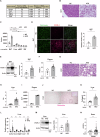
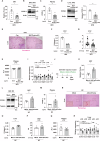
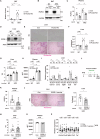
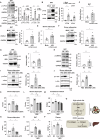
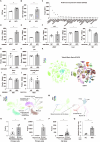

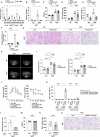
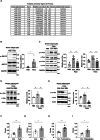
References
-
- Ali D, Figeac F, Caci A, Ditzel N, Schmal C, Kerckhofs G, Havelund J, Faergeman N, Rauch A, Tencerova M et al (2022a) Gene Expression Omnibus GSE194075. https://www.ncbinlmnihgov/geo/query/acccgi?acc=GSE194075 [DATASET] - PMC - PubMed
-
- Almind K, Kahn CR (2004a) Gene Expression Omnibus 123394. https://www.ncbinlmnihgov/geo/query/acccgi?acc=GSE123394 [DATASET]
-
- Almind K, Kahn CR (2004b) Genetic determinants of energy expenditure and insulin resistance in diet-induced obesity in mice. Diabetes 53:3274–3285 - PubMed
-
- Bartelt A, Bruns OT, Reimer R, Hohenberg H, Ittrich H, Peldschus K, Kaul MG, Tromsdorf UI, Weller H, Waurisch C et al (2011) Brown adipose tissue activity controls triglyceride clearance. Nat Med 17:200–205 - PubMed
MeSH terms
Substances
Grants and funding
- JPMJFR200L/MEXT | Japan Science and Technology Agency (JST)
- 23K27602/MEXT | Japan Society for the Promotion of Science (JSPS)
- 17K19648/MEXT | Japan Society for the Promotion of Science (JSPS)
- 16H06244/MEXT | Japan Society for the Promotion of Science (JSPS)
- 22K08215/MEXT | Japan Society for the Promotion of Science (JSPS)
LinkOut - more resources
Full Text Sources
Medical
Molecular Biology Databases
Research Materials
Miscellaneous

